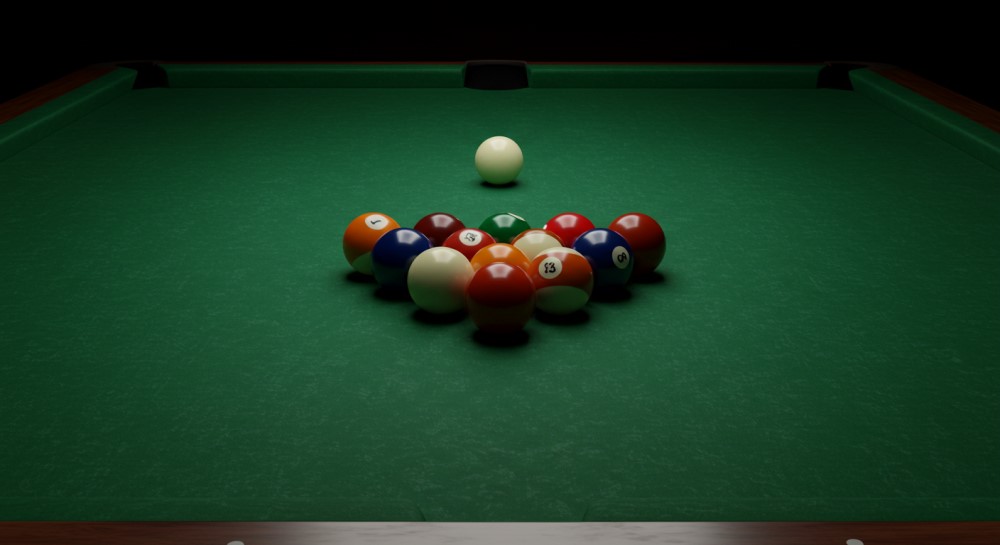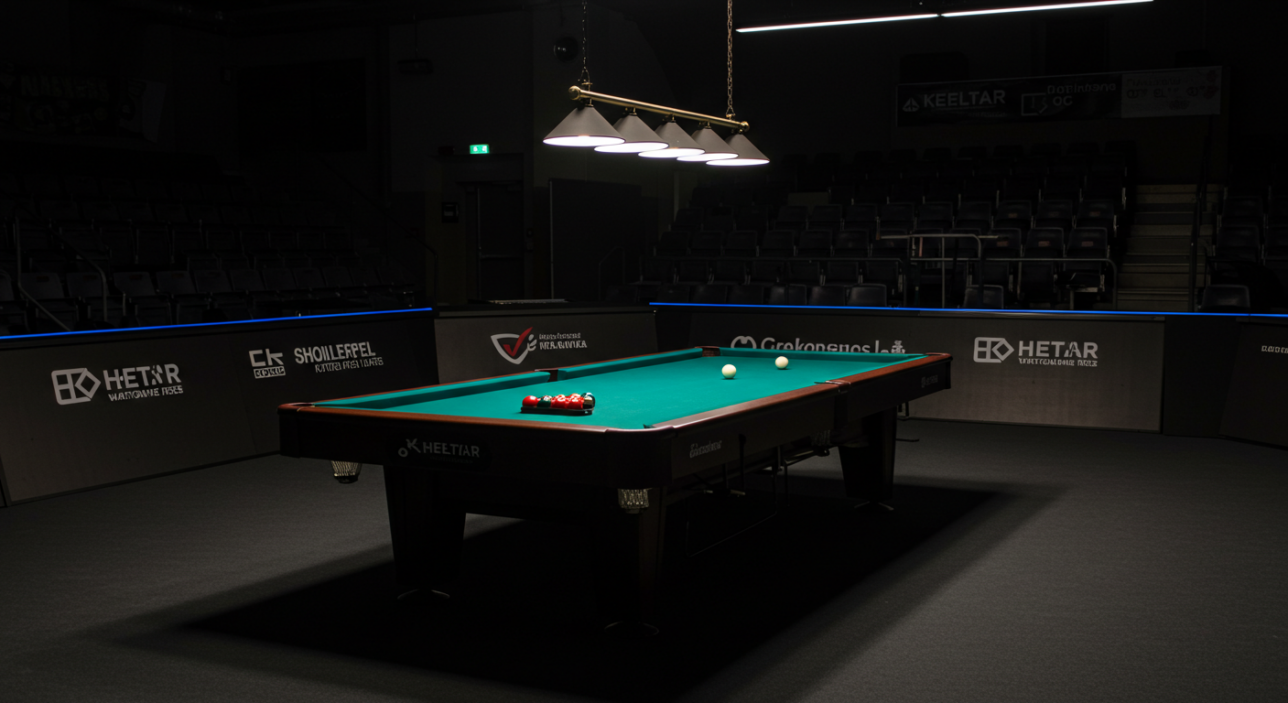
What Are the Rules for American Pool Games? (8-Ball, 9-Ball, & More)
Whether you’re racking up for a casual night out or getting competitive in a local league, understanding the rules for American pool games is key to playing well—and winning fairly. American pool refers to a variety of cue sports played on larger tables with wider pockets, using numbered balls and a cue ball. These games may look similar at first glance, but each version—be it 8-ball, 9-ball, 10-ball, or straight pool—has its own rhythm, strategy, and rulebook.
Knowing the differences between them can transform how you approach each match. From deciding who breaks to understanding legal shots, fouls, and winning conditions, the finer points of these games shape the entire experience. For instance, 8-ball requires players to pot either solids or stripes before sinking the black ball to win, while 9-ball is all about sequential shots and speed. Then there’s straight pool, where players call each shot and aim for a set score, rewarding precision and planning over flair.
This guide will walk you through the core rules for the most common American pool games—so whether you’re new to the game or brushing up your skills, you’ll know exactly what to do when it’s your turn at the table.
1. 8-Ball Pool: Classic Bar and Tournament Favourite

8-ball is the most recognised version of American pool, played in bars, clubs, and competitions worldwide. It’s played with a full set of 15 object balls (numbered 1–15) and the cue ball. One player must pot solids (1–7) and the other stripes (9–15). The 8-ball (black) is potted last to win.
Basic rules for American pool games like 8-ball:
-
The game begins with a legal break: at least four balls must hit the rails or one ball must be potted.
-
The table is “open” after the break, meaning neither solids nor stripes are assigned until a player pots a ball legally.
-
Players alternate turns by potting their assigned group (solids or stripes).
-
Fouls include potting the cue ball, failing to hit your group, or hitting the 8-ball early.
-
The game ends when the 8-ball is legally potted after all of a player’s group balls are cleared.
The 8-ball must be called, and if it’s potted on the break, the breaker has the option to re-rack or spot it and continue.
8-ball is a great introduction to rules for American pool games because it blends strategy, defence, and shot-making into a well-balanced match.
2. 9-Ball Pool: Fast, Dynamic, and Pro-Level Excitement
9-ball is the game of choice for professional American pool tournaments and televised events. It’s a high-speed format played with only balls 1 through 9, plus the cue ball, and is known for its aggressive style and creative shot-making.
Key rules for American pool games like 9-ball:
-
The balls are racked in a diamond formation with the 1-ball at the front and the 9-ball in the centre.
-
The objective is to pot the 9-ball legally, but shots must always start by contacting the lowest-numbered ball first.
-
You can win the game early by potting the 9-ball on a legal combination shot, as long as the lowest-numbered ball was contacted first.
-
A legal break requires the cue ball to contact the 1-ball, and at least one ball must be pocketed or four must hit the rails.
-
Fouls result in “ball in hand” for your opponent—meaning they can place the cue ball anywhere on the table.
Because each shot must begin with the lowest-numbered ball, 9-ball rewards precise position play, smart safety shots, and advanced cue ball control. It’s also common in tournament play for matches to be decided over multiple racks.
If you’re learning the rules for American pool games, 9-ball offers a fast and exciting way to refine your skills and test your strategy under pressure.
3. Straight Pool: Precision, Patterns, and Patience

Straight pool—also known as 14.1 Continuous—is a game of precision and planning, popular among traditionalists and players who value control over speed. Unlike 8-ball or 9-ball, there are no groups of balls to claim or fixed shot orders. The goal is to reach a set number of points by pocketing balls in any order, typically 100 or 150 in tournament play.
Official rules for American pool games like straight pool include:
-
Players call both the ball and intended pocket for each shot. Kicked, combo, or carom shots must still be called.
-
Each legally pocketed ball earns one point. The player continues shooting until they miss or commit a foul.
-
After 14 balls are pocketed, the 15th ball remains on the table while all others are re-racked. The player then attempts to pocket the 15th and break the fresh rack in one smooth motion.
-
Fouls result in a deduction of one point per infraction. Three consecutive fouls incur a 15-point penalty.
-
Standard fouls include failing to contact a rail or object ball, potting the cue ball, or incorrect calls.
Straight pool is a thinking player’s game. It rewards consistent potting, intelligent cue ball control, and the ability to open up future scoring opportunities while minimising risk.
For players learning the more cerebral rules for American pool games, straight pool develops shot discipline and long-term strategy unlike any other format. It’s less about flashy breaks and more about quiet dominance over the table.
4. One-Pocket: Tactical Mastery and Defensive Brilliance
One-pocket is one of the most strategic and defensive American pool games. It’s typically played one-on-one and uses the standard 15 object balls and a cue ball, but with a unique twist: each player is assigned one pocket—either the left or right foot (bottom) pocket—and can only score by potting balls into their designated pocket.
Key rules for American pool games like one-pocket:
-
The first player to legally pocket eight balls into their assigned pocket wins the game.
-
The other pockets are neutral; potting into them does not earn points and may end your turn or result in a foul.
-
Players alternate turns after misses or fouls. A foul results in the loss of one point and gives the opponent ball in hand behind the headstring.
-
Calling shots is optional in casual play but mandatory in professional or high-stakes games.
-
Because only one pocket is active per player, the game involves a high level of safety play, cue ball control, and strategic positioning.
Unlike more aggressive games like 9-ball, one-pocket demands tactical mastery. Players must think multiple shots ahead and often focus more on controlling the table than potting balls immediately.
If you’re seeking a test of mental fortitude and cue precision, learning the rules for American pool games like one-pocket is a fantastic way to elevate your all-around skill and understanding of cue sports.
5. 10-Ball Pool: A Modern Pro-Level Challenge

10-ball is a relatively modern addition to the American pool lineup and is seen by many professionals as a more skill-demanding alternative to 9-ball. Played with balls numbered 1 through 10, it shares similarities with 9-ball but includes stricter shot-calling requirements that eliminate “fluke” wins.
Core rules for American pool games like 10-ball include:
-
Balls are racked in a triangle, with the 1-ball at the apex and the 10-ball in the centre.
-
Players must always hit the lowest-numbered ball first, just like in 9-ball.
-
Unlike 9-ball, players must call both the object ball and intended pocket on every shot, including combinations and caroms.
-
If a player pots the 10-ball on a shot without calling it, the ball is spotted, and play continues.
-
A legal break requires at least one ball pocketed or four to hit the cushion. Failure results in a re-rack or ball-in-hand, depending on the rules used.
-
Fouls result in ball in hand, as with most pro-level formats.
10-ball is a favourite among top-level competitors because it rewards planning, shot accuracy, and precise cue ball control. The requirement to call shots reduces lucky pots and increases emphasis on skill.
If you’re exploring more advanced rules for American pool games, 10-ball is a must-try for any player looking to sharpen their tactical thinking and reduce reliance on fortune.
6. Bank Pool: Precision and Nerve
Bank pool is a niche but thrilling variation that tests a player’s ability to calculate and execute bank shots—where the object ball must rebound off one or more rails before being pocketed. No direct pots are allowed, making every shot a demonstration of skill and precision.
Key rules for American pool games like bank pool:
-
The game is usually played with all 15 object balls. Each successful banked pot scores one point.
-
Players call both the ball and the pocket, and it must reach the pocket via a legal bank (no caroms, kisses, or double hits).
-
The first to a predetermined score (typically 8 or 10) wins the match.
-
On a miss or foul, the opponent takes over from where the cue ball lies, or with ball in hand, depending on house rules.
-
All bank shots must be clean—no contact with other balls or multiple cushions before striking the intended ball.
Bank pool is played slowly, strategically, and often with deliberate safety play. It develops a player’s ability to read angles, measure power, and anticipate how balls react to rail contact.
This game teaches some of the most underappreciated skills in cue sports, making it an essential format to learn when expanding your knowledge of the rules for American pool games.
7. Rotation Pool: Points-Based Precision

Rotation pool is one of the oldest cue sports formats and a true test of patience, cue ball control, and tactical foresight. It’s played with a full rack of 15 balls, and players must always strike the lowest-numbered ball on the table first—but unlike 9-ball, all balls carry a point value equal to their number.
Core rules for American pool games like rotation include:
-
Each legally potted ball adds its number to the shooter’s score.
-
Players must call both the ball and the pocket for each shot.
-
The game is usually played to a fixed number of points—61 points in a two-player match (as that’s over half the total value of all 15 balls).
-
A legal break must contact the lowest-numbered ball first and drive at least four balls to the rail.
-
Fouls, such as failing to hit the lowest-numbered ball or scratching the cue ball, result in ball in hand for the opponent.
Rotation pool forces you to carefully consider positioning and power control, as it’s not just about potting balls—it’s about setting up your next shot while respecting the mandatory contact order.
The points-based nature makes it ideal for strategic thinkers and players who enjoy rules for American pool games that reward precision, patience, and long-term planning. It’s also a great way to refine your overall fundamentals.
8. Speed Pool: Fast, Fun, and Physically Demanding
Speed pool flips the traditional pace of American pool on its head. It’s all about quick reactions, fast thinking, and efficient cueing, making it perfect for exhibitions, parties, and adrenaline-filled practice sessions.
Typical rules for American pool games like speed pool:
-
Players must pot all 15 object balls as quickly as possible. The clock starts on the break and ends once the final ball is potted.
-
Fouls—like missing a shot or potting the cue ball—result in time penalties (usually five seconds added to the total time).
-
In solo play, players aim to beat their own time or set personal records. In competitive formats, two players may compete side by side or take turns for the best time.
-
The balls can be potted in any order, and no shot-calling is required.
Though not as common in professional circles, speed pool offers a fantastic way to sharpen cue ball control, develop rhythm, and build muscle memory. It also teaches table scanning—quickly identifying patterns and determining the most efficient sequence of shots.
Speed pool is a great introduction to rules for American pool games that focus more on physical execution and less on tactical positioning. It’s ideal for social settings, practice routines, and building confidence under pressure.
Final Conclusion: Mastering the Rules, Mastering the Game

American pool is far more than a casual pub pastime—it’s a diverse and rewarding discipline with a range of games, each requiring a unique mix of skill, strategy, and knowledge. By learning the rules for American pool games, you not only improve your gameplay, but also deepen your appreciation for the sport’s complexity and richness.
From the popular and widely played 8-ball to the pro-level intensity of 10-ball, from the tactical finesse of one-pocket to the speed and thrill of time-based formats—each game offers its own challenges and rewards. Understanding the specific rules for each version helps you adapt your tactics, avoid fouls, and elevate your overall performance.
Whether you’re training seriously or just playing for fun, being fluent in the rules ensures smoother matches and better sportsmanship. It also prepares you for competitive environments, where knowing when to call a shot or take a ball in hand can mean the difference between victory and defeat.
Here’s what you can do next:
-
Pick one format (like 9-ball or straight pool) and learn it inside and out.
-
Practise solo drills that reflect the rules—especially position play and legal shot-making.
-
Play with others who know the game well and aren’t afraid to enforce proper rules.
-
Refer to the official rules from bodies like the Billiard Congress of America (BCA) or World Pool-Billiard Association (WPA) for tournament-level accuracy.
By mastering the rules for American pool games, you open the door to deeper strategy, cleaner play, and a more satisfying experience every time you approach the table.
So chalk up, break with confidence, and let the game begin—now with the knowledge to play it right.





